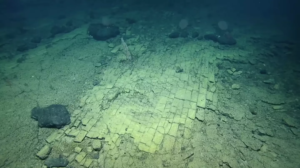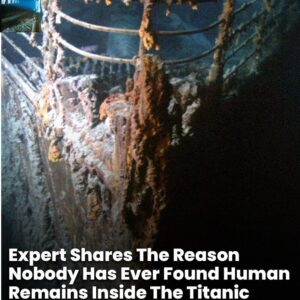The stones on the road appeared to have been perfectly placed
Researchers exploring the ocean depths near Hawaii recently discovered what looked like a ‘yellow brick road’ stretching across the ocean floor. One of the scientists even joked that it might be “the road to Atlantis.”
The legendary lost city of Atlantis has sparked curiosity for centuries, making any discovery like this especially fascinating. This remarkable find occurred during an expedition in the Liliʻuokalani Ridge within the Papahānaumokuakea Marine National Monument (PMNM) in the Pacific Ocean.
What secrets might this underwater path reveal?

It features a series of yellow-tinged stones which lie next to each other at neat angles, as if they had been purposefully arranged.
It would be easy to imagine a huge, underwater city looming at the end of the road, which is probably why one of the researchers did jokingly dub it the ‘road to Atlantis’ in the video.
However, the team soon offered further insight to the finding and explained it’s actually a natural occurence.
In a statement, the team said: “At the summit of Nootka Seamount, the team spotted a ‘dried lake bed’ formation, now IDed as a fractured flow of hyaloclastite rock (a volcanic rock formed in high-energy eruptions where many rock fragments settle to the seabed).
“The unique 90-degree fractures are likely related to heating and cooling stress from multiple eruptions at this baked margin.”
The researchers added: “What may look like a yellow brick road to the mythical city of Atlantis is really an example of ancient active volcanic geology.
“Our Corps of Exploration have witnessed incredibly unique and fascinating geological formations while diving on the Liliʻuokalani Ridge within the Papahānaumokuakea Marine National Monument.”
The PMNM is the largest contiguous fully-protected conservation areas in the world, covering 582,578 square miles of the Pacific Ocean – an area larger than all of the US’s national parks combined.
It is one of only 24 World Heritage sites in the US, and joined Hawaii Volcanoes National Park to become one of two in Hawaii.
The huge expanse of the area means that only a small percent of it has been explored – so it’s not entirely surprising that the researchers stumbled upon some noteworthy sights.
In their statement, the researchers added: “Throughout the seamount chain, the team also sampled basalts coated with ferromanganese (iron-manganese) crusts from across different depths and oxygen saturations as well as an interesting-looking pumice rock that almost resembled a sponge.”





